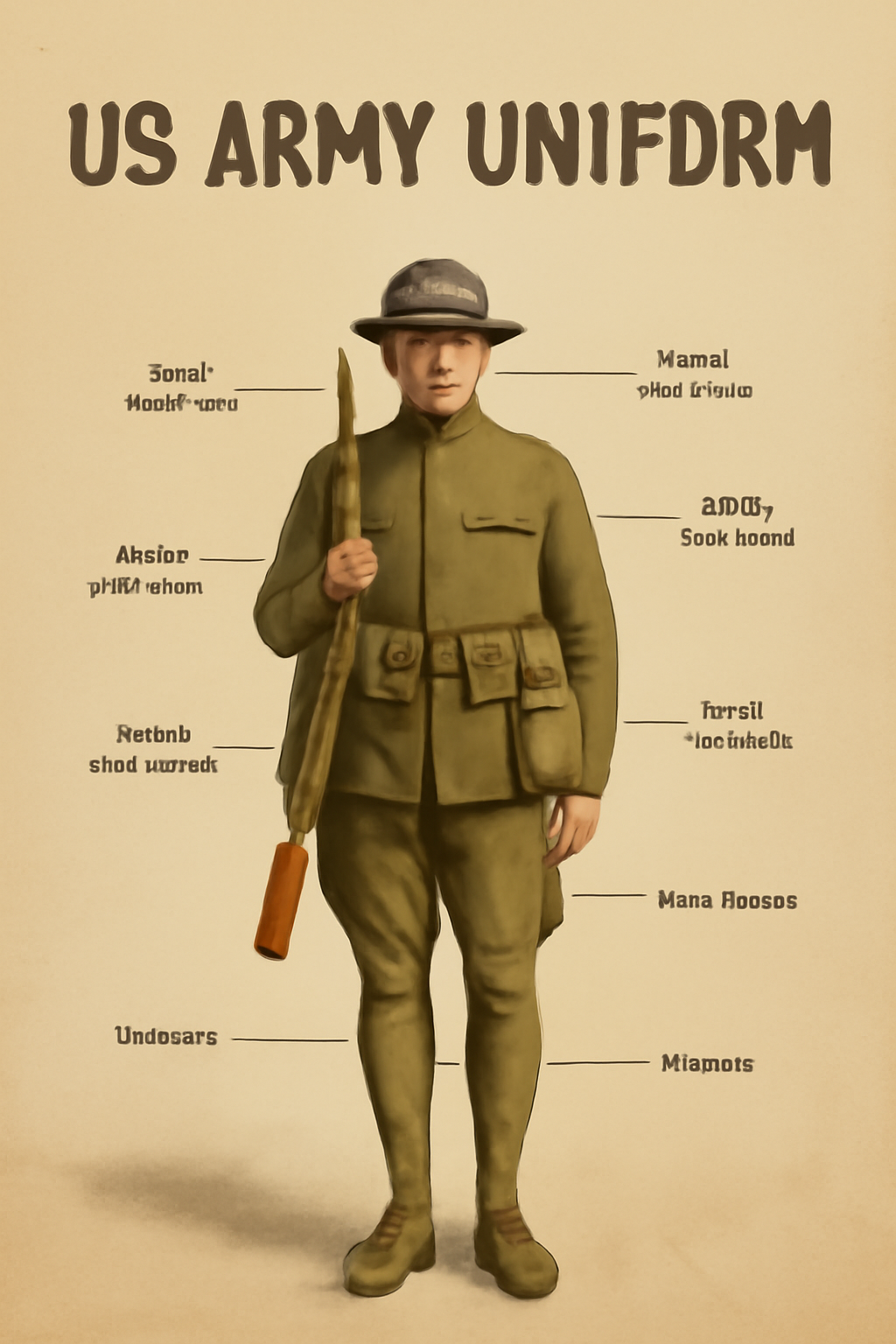
The Iconic WW1 US Army Uniform: History, Gear, and Its Role in the Great War
Published on Jun 27, 2025
WW1 US Army Uniform: A Complete Guide to Doughboy Gear & Legacy
When we think about World War I, iconic images of American soldiers, commonly referred to as “Doughboys,” often come to mind—dressed in olive-drab uniforms, steel helmets, and rugged boots. These uniforms didn’t just represent military attire; they symbolized national pride, resilience, and the evolving tactics of modern warfare.
In this article, we’ll explore the origins, components, and historical significance of the WW1 US Army uniform, helping you better understand what made this gear iconic and how it has inspired military fashion and collecting even today.
1. Historical Context: The Making of the Doughboy Uniform
Before 1917, the US military was relatively small and lacked the infrastructure to support a massive war effort. When America entered WW1, the army had to expand rapidly, outfitting over 4 million men. Previous American conflicts initially inspired uniforms, but the demands of trench warfare in Europe required adaptations.
The uniform worn by WW1 American soldiers was designed for functionality and to instil unity and discipline across a rapidly expanding army.
2. The Core Components of the WW1 US Army Uniform
Let’s break down the primary items that made up the standard WW1 US Army uniform:
a) Service Coat (Tunic)
The M1912 and M1917 wool service coats were the mainstay of the American soldier’s upper body uniform. These coats were made of heavy olive drab wool and featured:
- Four front pockets with flaps
- A stand-up collar
- Brass US and branch insignia buttons
- Tight-fitting design to prevent snagging in trenches
Over time, the M1917 became more widespread due to the ease of mass production.
b) Breeches (Trousers)
Breeches, worn tightly below the knee, were usually made of wool to match the tunic. They allowed for better mobility while maintaining a neat appearance. They were paired with canvas or wool puttees, which were wrapped around the lower legs for protection and support.
c) Puttees and Leggings
Puttees, derived from British influence, were long cloth strips wrapped around the lower leg. Later, canvas leggings also became common, especially for American Expeditionary Forces.
d) Footwear: Marching Boots
Initially, the US Army used the Russet Marching Shoe, but these were soon replaced with sturdier trench boots by 1918. The Pershing boot (Model 1918) offered greater ankle support and durability in muddy European trenches.
e) Headgear: The Iconic M1917 Helmet
One of the most distinctive features of the WW1 uniform was the M1917 steel helmet, also known as the “Doughboy helmet.” Based on the British Brodie helmet, it offered basic protection from shrapnel and debris. Painted in textured olive drab with a rough finish to reduce glare, this helmet became a symbol of the American soldier.
f) Shirts and Undergarments
The uniform included a wool flannel shirt, often worn under the service coat. Soldiers also received cotton or wool undergarments, depending on the season and available supplies.
3. Field Gear and Equipment
In addition to clothing, soldiers carried essential field gear, including:
- M1910 cartridge belt with pouches for ammo
- Canteen and mess kit
- Gas mask (due to chemical warfare threats)
- Entrenching tool (small spade for digging trenches)
- Backpack or haversack for personal and survival gear
These items were designed to be modular, making it easier for troops to move and fight efficiently in trench warfare.
4. Insignia and Rank
Rank insignia was sewn onto the sleeves using coloured chevrons and patches. Infantrymen typically wore blue insignia, while artillery and other branches had their colours. Overseas stripes were also awarded for time served in foreign campaigns.
5. Evolution and Improvements During the War
As the war progressed, feedback from the front lines led to several improvements in the uniform design:
- Better ventilation in wool coats
- Reinforced boots
- Gas mask upgrades
- Shift from wrap-around puttees to canvas leggings for faster gear-up time
These improvements were crucial as the US Army became more engaged in large-scale European battles in 1918.
6. The Cultural Legacy of the WW1 US Army Uniform
Even after the war ended, the WW1 uniform left a significant impact:
- Fashion influence: Elements like trench coats and rugged boots became popular in civilian clothing.
- Military tradition: The olive drab colour and field gear design continued into WW2.
- Collecting and Re-enactments: Original pieces of WW1 US Army uniforms are highly sought after by collectors and history re-enactors. Websites like Paddelaters.com offer reproductions and authentic pieces that preserve this vital part of history.
7. Reproduction vs. Original: What Collectors Should Know
Suppose you're building a collection or outfitting for a WW1 re-enactment. In that case, you may wonder whether to use authentic vintage uniforms or quality reproductions. Original pieces can be rare and fragile, while reproductions (especially those offered at Paddelaters.com) are crafted with attention to historical detail and modern durability—ideal for display or performance.
8. Conclusion: A Uniform That Stood the Test of Time
The WW1 US Army uniform wasn’t just about function—it symbolised American grit, identity, and emergence on the world stage. Whether you're a collector, historian, or enthusiast, understanding the elements of this uniform provides a window into the lives of the brave Doughboys who shaped 20th-century history.
To explore authentic and reproduction WW1 US Army uniforms, visit Paddelaters.com — your destination for historical accuracy and quality craftsmanship.
